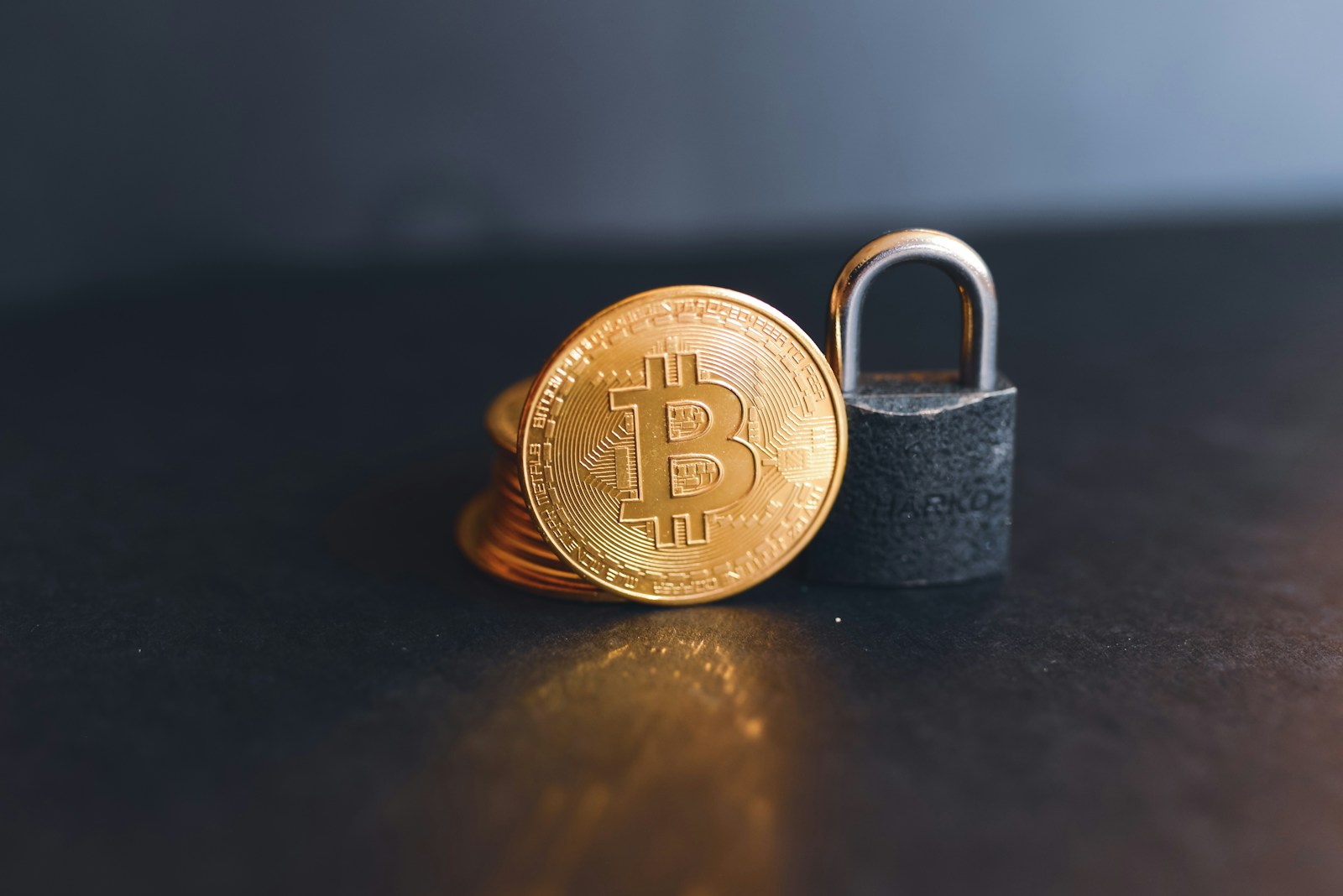Always keep your private keys offline and never share them with anyone. These keys are the gateway to controlling your funds, so storing them securely–preferably on hardware wallets or cold storage–is fundamental for safeguarding ownership.
Use strong, unique passwords combined with two-factor authentication (2FA) on all platforms managing cryptocurrencies. This adds an extra shield against unauthorized access and reduces risks from phishing attacks or data breaches.
Regularly update software wallets and related applications to patch vulnerabilities that could expose sensitive information. Avoid using public Wi-Fi networks when accessing wallets or exchanges to minimize interception threats targeting confidential details.
Back up wallet seed phrases in multiple secure locations, like fireproof safes or encrypted drives, ensuring recovery options if devices are lost or damaged. Treat these backups as valuable documents since losing them can result in irreversible loss of funds.
Crypto security basics: protecting your digital assets
Start by safeguarding private keys with utmost care, as these cryptographic credentials grant full control over blockchain holdings. Storing them offline in hardware wallets or physical paper backups drastically reduces exposure to hacking attempts and phishing scams. Avoid keeping keys on internet-connected devices or cloud services without encryption, since attackers exploit such vulnerabilities to gain unauthorized access.
Multi-factor authentication (MFA) enhances protection layers beyond passwords alone. Combining something you know (password), something you have (hardware token or phone), and something you are (biometrics) creates a robust defense against account breaches. For example, enabling MFA on exchanges and wallet interfaces significantly lowers risks of unauthorized transfers even if login credentials leak.
Key management and storage techniques
The foundation of securing blockchain holdings lies in effective key management strategies. Using hierarchical deterministic (HD) wallets allows generation of multiple addresses from a single seed phrase, simplifying backup while maintaining privacy through address rotation. Seed phrases must be recorded physically and stored securely; digital copies risk compromise via malware or ransomware.
- Cold storage: Disconnects keys from the internet entirely, utilizing hardware wallets or air-gapped computers to sign transactions safely offline.
- Shamir’s Secret Sharing: Splits private keys into parts distributed among trusted parties, requiring a quorum to reconstruct–mitigating single points of failure.
Consider using reputable open-source wallet software audited by independent experts to minimize hidden vulnerabilities. Regularly update firmware on hardware devices to patch known exploits and maintain compatibility with network upgrades.
Recognizing threats and attack vectors
A common method adversaries employ involves social engineering tactics like phishing emails mimicking legitimate platforms requesting confidential information. Always verify URLs carefully before inputting credentials or signing transactions. Malware targeting clipboard data can replace copied wallet addresses with attacker-controlled ones, leading to unnoticed fund diversion during transfers.
- Man-in-the-middle attacks: Intercept communication between users and services; use end-to-end encrypted channels wherever possible.
- SIM swapping: Attackers hijack phone numbers to bypass SMS-based authentication; prefer app-based authenticators instead.
- Supply chain compromises: Tampered software installations can embed backdoors; download from official sources only.
Implementing transaction verification protocols
Before approving any transfer, confirm recipient addresses via multiple methods such as QR code scanning combined with manual cross-checks. Large transactions should undergo additional validation steps including time delays allowing reconsideration upon detecting irregular activity patterns. Some custodial services offer whitelisting features restricting withdrawals only to predefined addresses enhancing control over outgoing funds.
The adoption of multisignature wallets further distributes authorization power among several entities, reducing risks associated with single compromised keys. This approach is particularly beneficial for organizational accounts managing significant volumes where collective consent is required for spending decisions.
Evolving practices in asset protection
A layered approach combining these mechanisms tailored to individual requirements balances convenience with heightened protection standards against emerging cyber threats targeting blockchain ecosystems.
Choosing Secure Wallets
Selecting an appropriate wallet plays a fundamental role in maintaining the integrity of your holdings. Hardware wallets, often regarded as the safest choice, store private keys offline, minimizing exposure to network vulnerabilities. Devices like Ledger Nano S or Trezor Model T utilize secure elements and PIN protection, significantly reducing risks associated with malware or phishing attacks.
Software wallets provide greater convenience but require careful consideration regarding their security protocols. Applications such as Electrum offer features like seed phrase backups and multi-signature support, enhancing control over key management. However, these wallets remain connected to the internet and thus demand vigilance against potential breaches.
Key Factors in Wallet Selection
The nature of private key storage fundamentally influences risk levels. Cold storage solutions keep keys isolated from internet access, while hot wallets maintain online connectivity for ease of transactions. Assessing personal usage patterns helps determine which balance between accessibility and safety is most suitable.
Multi-signature wallets introduce an additional layer of defense by requiring multiple approvals before executing transactions. This approach mitigates single-point failures caused by compromised keys. For example, businesses often implement multisig setups through platforms like BitGo to distribute responsibility among trusted parties.
Backup strategies are integral to wallet reliability. Seed phrases or recovery keys must be stored securely offline–preferably using physical media such as metal plates resistant to fire and water damage. Neglecting this step risks permanent loss of funds if devices become inaccessible or corrupted.
Compatibility with supported blockchains and user interfaces can impact operational efficiency without compromising security essentials. Evaluating open-source options allows scrutiny of codebases for vulnerabilities, promoting transparency and trustworthiness in wallet software development cycles.
Setting up two-factor authentication
Enabling two-factor authentication (2FA) significantly reduces the risk of unauthorized access by requiring a second verification step alongside passwords. For managing private keys and sensitive accounts, implementing 2FA creates an additional layer that must be bypassed before any transaction or login attempt succeeds. This method typically pairs something you know (a password) with something you have (a mobile device generating time-sensitive codes), enhancing protection for your holdings.
Common options for 2FA include authenticator apps like Google Authenticator or hardware tokens such as YubiKey. These generate one-time passcodes based on algorithms synchronized with the server. Unlike SMS-based verification, which can be vulnerable to SIM swapping attacks, app-generated codes or physical devices offer stronger resistance against interception and phishing attempts.
Practical steps to enable two-factor authentication
Begin by accessing the security settings of your wallet or exchange platform. Locate the section dedicated to multi-factor verification and select the option to activate it. After scanning a QR code via an authenticator app, save backup codes securely–these are critical if you lose access to your authentication device. It’s advisable never to store these backups online or in unencrypted files.
When configuring 2FA, consider creating a recovery plan that involves multiple trusted locations for backup keys or hardware tokens. For instance, splitting backup phrases between personal safe storage and a secure external location minimizes risk during theft or device failure. This approach safeguards cryptographic credentials and contributes to overall operational continuity of asset management.
Recognizing Phishing Attempts
Always verify the authenticity of any message requesting access to your private keys or sensitive information. Phishing attempts often mimic legitimate platforms by using URLs that differ slightly from official websites, such as replacing letters with similar-looking characters. For example, an attacker may use “exarnple.com” instead of “example.com,” hoping users won’t notice the subtle difference. Checking URLs carefully and bookmarking trusted sites reduces the risk of falling victim to these scams.
Email and messaging phishing campaigns frequently employ urgent language designed to provoke immediate action, such as warnings about account suspension or unauthorized transactions. These messages may include links prompting users to enter recovery phrases or passwords. Never input private keys or seed phrases into any online form; genuine services do not request this information via email or chat.
Common Techniques and How to Identify Them
Phishing methods include fake login pages, malicious attachments, and deceptive pop-ups. A well-documented case involved attackers sending emails mimicking a popular wallet provider’s support team, asking recipients to update security settings through a fraudulent link. Victims who complied exposed their credentials, resulting in loss of funds. To detect such threats:
- Hover over links without clicking to preview actual URLs.
- Examine sender email addresses for inconsistencies or unusual domains.
- Avoid downloading attachments unless verified directly from official sources.
The use of two-factor authentication (2FA) can mitigate risks by adding an extra layer of verification even if credentials are compromised. However, 2FA alone is insufficient if users share their private keys. Always keep these keys confidential and offline whenever possible.
Browser extensions claiming enhanced protection can sometimes introduce vulnerabilities themselves if sourced from unverified developers. Installing security tools exclusively from reputable repositories minimizes exposure to phishing vectors disguised as helpful utilities.
A practical step involves periodically reviewing transaction histories and account activity on blockchain explorers linked to your wallet addresses. Unexpected transfers might signal prior credential compromise due to successful phishing attacks. Early detection enables prompt response measures like moving remaining tokens to secure wallets with new key pairs.
Backing Up Private Keys: A Pillar of Wallet Safety
Storing private keys securely through reliable backups is the foremost step in ensuring uninterrupted access to token holdings and preventing irreversible loss. Employing multiple, geographically separated copies–ideally using hardware wallets combined with encrypted paper or metal backups–minimizes risks from physical damage, theft, or device failure.
For instance, utilizing hierarchical deterministic (HD) wallets enables derivation of entire key sets from a single seed phrase. Safeguarding this seed with robust offline encryption and storing it in secure locations greatly elevates protection levels. This approach balances convenience and security, allowing easy recovery while reducing exposure to online threats.
Key technical insights include:
- Redundancy: Replicate private key backups across multiple formats and sites to prevent single points of failure.
- Encryption: Apply strong symmetric cryptography (e.g., AES-256) when storing digital copies to resist unauthorized access.
- Physical durability: Use non-degradable media like metal plates for seed storage to withstand fire, water, or corrosion.
- Access control: Limit knowledge and physical access strictly to trusted individuals or devices following the principle of least privilege.
The ongoing evolution of wallet technologies promises integration of multi-factor authentication tied directly to hardware modules, enhancing backup safety without compromising usability. Additionally, emerging decentralized key management systems aim to distribute trust among multiple parties through threshold signatures or secret sharing schemes–reducing reliance on any single custodian.
Understanding foundational precautions around private key preservation cultivates resilience against common vulnerabilities such as phishing attacks or malware-induced extraction attempts. Encouraging users to adopt layered protection strategies harmonizes security with practical daily usage, fostering confidence in managing blockchain-based holdings over time.
In conclusion, methodical backup procedures form the bedrock for long-term stewardship of cryptographic identities. As developments continue toward more sophisticated cryptographic safeguards and user-friendly recovery protocols, individuals will gain greater assurance that their confidential credentials remain inviolable despite evolving challenges within distributed ledger ecosystems.





